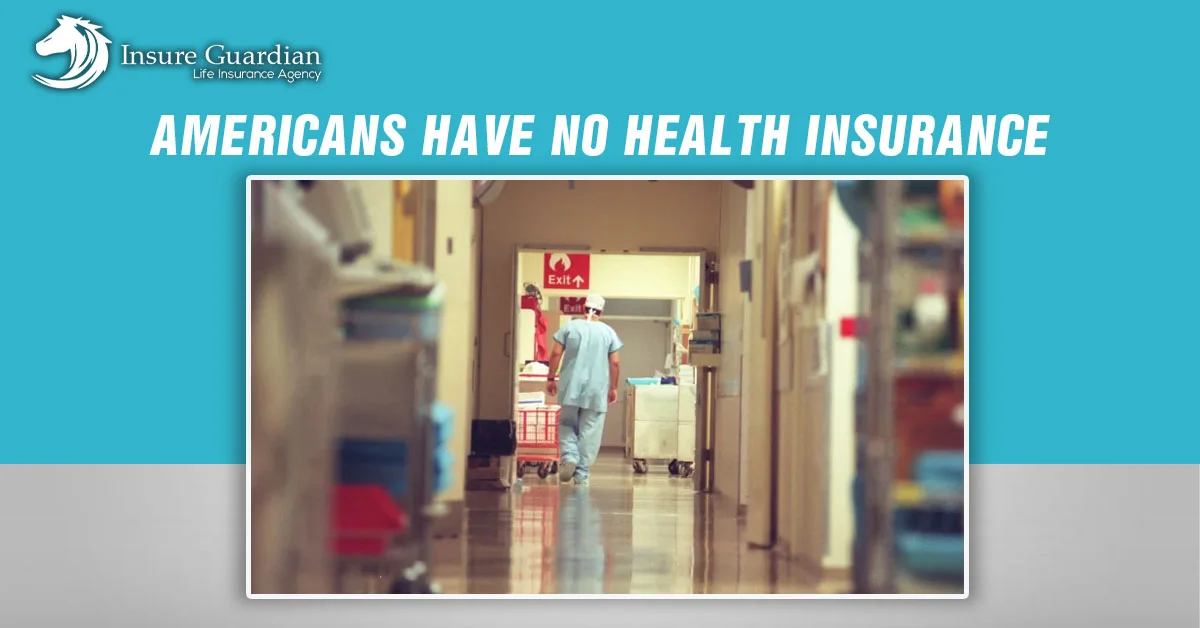Health insurance is crucial for ensuring people access quality and affordable healthcare. However, not everyone in the United States of America has health insurance. Many of the country’s population faces the brutal reality of living without health insurance.
It is interesting to know how many Americans do not have health insurance. There are many reasons why these people stay uninsured. Some of them think that health insurance is an additional expense, while for some individuals, it is unaffordable. This blog post will discuss how many Americans lack health insurance and explore its implications.
How many Americans are insured?
According to the U.S. Census Bureau, about 28.1 million Americans under 65 did not have health insurance in 2021. These stats show a decrease from the 28.9 million uninsured Americans in 2020.
The number of uninsured citizens in the USA has been a persistent concern for policymakers. Along with the passage of the Affordable Care Act (ACA) in 2010, there has been an increase in insurance coverage, but substantial gaps are still there. Moreover, these stats may fluctuate over time due to several economic, political, and demographic factors.
Key Facts about the Uninsured Population of the USA
Knowing key facts about the uninsured population in the USA is integral for addressing the challenges and finding practical solutions. Following are some essential facts to consider:
1- Prevalence: As of 2021 states, approximately 28 million Americans under 65 were uninsured. It means that around 8.6% of the population in this age group did not have health insurance.
2- Demographic Disproportion: Insurance rates may vary across several demographic groups. Young adults between 19-34 are more likely to be uninsured than other groups.
3- Employment Status: Many uninsured individuals are employed but don’t have access to employer-sponsored health insurance. It is due to many factors, including job type, employer size, or the cost of coverage.
4- Income Level: Low-income individuals are at greater risk of being uninsured. Government health insurance programs, like Medicaid, help fill this gap but states that haven’t expanded Medicaid eligibility under the ACA leave them without affordable options.
What are the impacts of being uninsured on health outcomes?
Lacking health insurance can be very risky and devastating. Uninsured persons are less likely to get preventive care, early disease detection, and immediate medical treatments. However, lack of access may result in delayed diagnosis, enhanced morbidity rates, and often preventable deaths. Such persons also have to face financial burdens while seeking medical care, leading them to medical debt or financial instability.
Challenges and Proposed Solutions
Analyzing the distribution of uninsured persons across states discloses significant disparities. States that did not expand Medicaid under the ACA have higher rates of insured residents. Furthermore, geographic regions with higher poverty rates and fewer healthcare resources face challenges in achieving universal coverage.
So getting a complete healthcare plan for all Americans is a complex task that needs addressing various underlying challenges. These may include the rising costs of healthcare services, political disagreements regarding healthcare reform, and others.
Different potential solutions have been proposed to cover the gap and minimize the number of uninsured citizens. The solutions include:
- Expanding Medicaid programs.
- Introducing plans to enhance affordability and accessibility.
- Prioritizing health care reform at the federal and state levels.
Despite many ongoing challenges, there have been many efforts to improve coverage in the USA. Introducing state-based marketplaces, the recent expansion of Medicaid in several states, and the development of innovative insurance models like health savings accounts, aim to raise the issue of un insurance. But there is still much work to be done to get equitable access to healthcare for all.
Final Thoughts
Americans without health insurance remain a significant concern, as there is a gap in our society’s ability to give adequate healthcare to all citizens. The stats highlight the need for ongoing efforts to address the issue. With the help of potential solutions, advocating for policy changes, and encouraging public awareness, we can strive to get a future where every citizen has access to the health care they deserve.
Frequently Asked Questions (FAQs)
1- Who are the uninsured persons in the USA?
Most uninsured people are from low-income families or maybe those who have one worker in the family. Adults are more likely to be uninsured than children due to the limited availability of public coverage in some states. Moreover, minorities and brown or dark people are at greater risk of being uninsured than white people.
2- Why do people have no health insurance coverage?
Many uninsured people are uninsured due to the high insurance cost as they lack coverage, regardless of policy efforts to improve coverage affordability. In 2021, most uninsured adults said they did not have health insurance plans because the cost of coverage was too high. Many of them do not have access to coverage via job. Moreover, undocumented immigrants are ineligible for Medicaid or Marketplace coverage.
3- How does not having insurance coverage affect health care access?
People having no insurance coverage may have inferior access to health care than those insured. One in five uninsured people went without necessary medical care due to cost. Studies say uninsured individuals receive limited preventive care and healthcare services for significant health conditions and chronic diseases.






